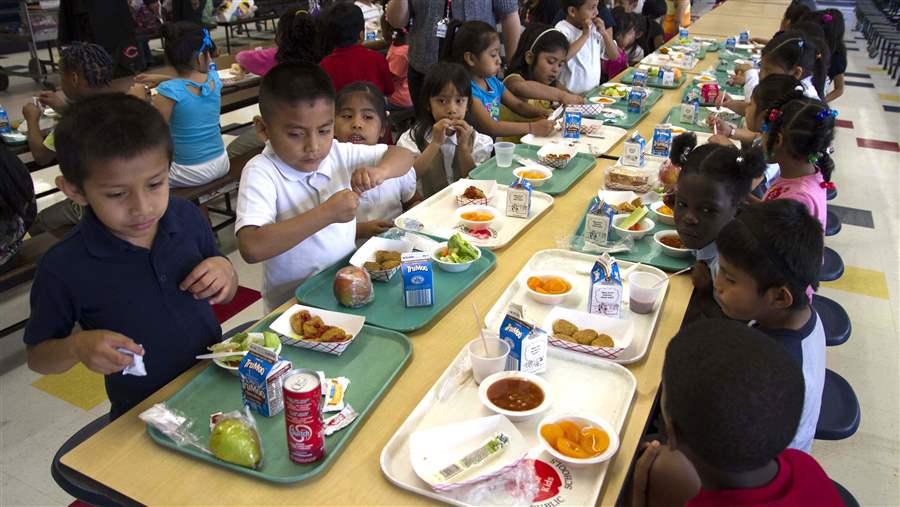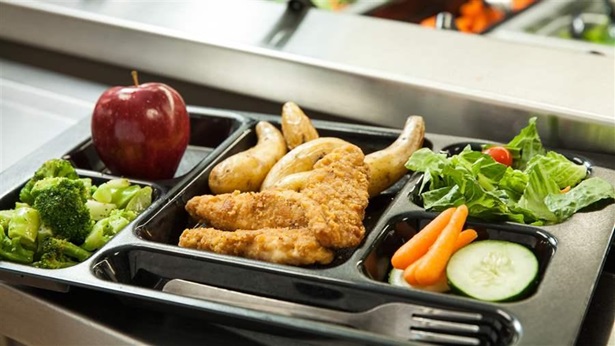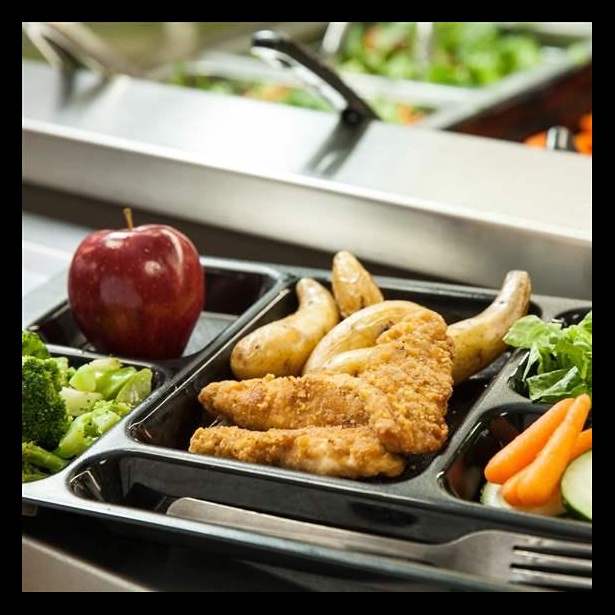'A Major Movement Toward Better Student Health Is Underway in Schools'
A conversation on school nutrition with Kevin Nelson, principal of Beresford Elementary School in Beresford, South Dakota

Teaching children the importance of a balanced diet requires consistent, long-term efforts, but considerable evidence shows that schools have—and are seizing—the opportunity to help young Americans develop healthy eating habits.
© The Pew Charitable TrustsStaff and students at Beresford Elementary School earned a National Healthy Schools Award in 2015 for their work to improve children’s nutrition and physical activity. The Kids’ Safe and Healthful Foods project talked with Principal Kevin Nelson about the school’s winning wellness efforts.
Q: How are schools providing a healthier environment today than five or 10 years ago?
A: A major movement toward better student health is underway in schools. At Beresford, our goal as far as wellness is concerned is to help students eat better and move more. These kids spend most of their waking hours in our care, and it’s our responsibility to feed them well and encourage them to be physically active. It’s all part of instilling habits and values that will set these kids up for a lifetime of good health.
The biggest changes are happening in the largest classroom on campus: the cafeteria. The updates in the U.S. Department of Agriculture’s school nutrition standards give children the opportunity to maximize their intake of healthy foods. We’ve also observed that these changes are influencing practices beyond the lunchroom. Teachers are taking “brain breaks,” which give students time to move around and refocus. One of our teachers here at Beresford uses pedal desks in her third-grade classroom so students can get more physical activity throughout the day without actually moving or disrupting class.
Q: Research shows that students across grade levels are accepting healthier meals. Have you seen that in your cafeteria?
A: Establishing healthy eating habits is a process, and we are working with the students to figure out what nutritious food they like. Every day I watch kids eat things they weren’t eating before we took on the challenge of higher nutrition standards, and it’s telling of what might come if we continue on this path toward healthfulness. We’ve seen an increase in student acceptance of foods like garbanzo beans and pickled beets—options we probably wouldn’t have even tried 20 years ago. This progress is thanks to taste tests in the classroom, an introduction of these foods in the cafeteria, and a conscious effort by teachers and nurses to talk about why some foods are better for their bodies than others.
Q: Have schools been through other, similar changes in recent years?
A: Definitely, and the first that comes to mind is our attitude to water. Forty years ago, the thought of kids bringing water into the classroom would have been dismissed as absurd. Now we know that people—and children in particular—should be hydrating regularly to maximize their health and brain function. So we encourage kids at Beresford to bring water to class.
As our scientific understanding of kids’ health needs continues to advance, educators and parents need to push schools to keep up with the science.
Q: Researchers have observed that principals often hold more sway over cafeteria policies than food service staff. How have you used your influence to shape the food choices and environment in your school?
I would agree with that research. If your building administrator is into science, for example, there will be good science programs. The same goes for an administrator who is into physical activity. Proper hydration, nutrition, and physical activity all contribute to students’ success, both on the sports fields and in the classroom. This is something I value, so I certainly was on board, but our staff and community were completely on board as well.
At Beresford, we have a wellness committee in which we’ve collectively decided to limit food rewards and unhealthy fundraisers. Instead of bringing cupcakes on students’ birthdays, we let classrooms have 20 extra minutes of recess. We include our food service team in all wellness decisions, like shifting recess to be before lunch so that kids don’t rush through their meals to get out to the playground faster.
Q: Why is it so important that your students receive healthy meals?
We owe it to future generations to offer foods that will help them learn at maximum capacity. If kids get up in the morning and fill their bodies with sugar instead of with nutrients that we know actually aid and enhance learning, they hinder their own ability to learn.
At the end of the day, the basic goal of educating kids is propped up by making sure we give all students the tools they need to learn. We know that most parents support healthier school meals and snacks. Brain research and the historical precedents that we’ve seen with other things, such as ensuring that kids drink plenty of water and get regular physical activity, all indicate that prioritizing health in schools makes sense. So to me, continuing this progress is really a no-brainer.


America’s Overdose Crisis
Sign up for our five-email course explaining the overdose crisis in America, the state of treatment access, and ways to improve care
Sign up

Five Facts About School Meal Programs


Are You School Lunch Savvy?
As students return to class and the cafeteria, test your smarts with our quiz.
Learn More








